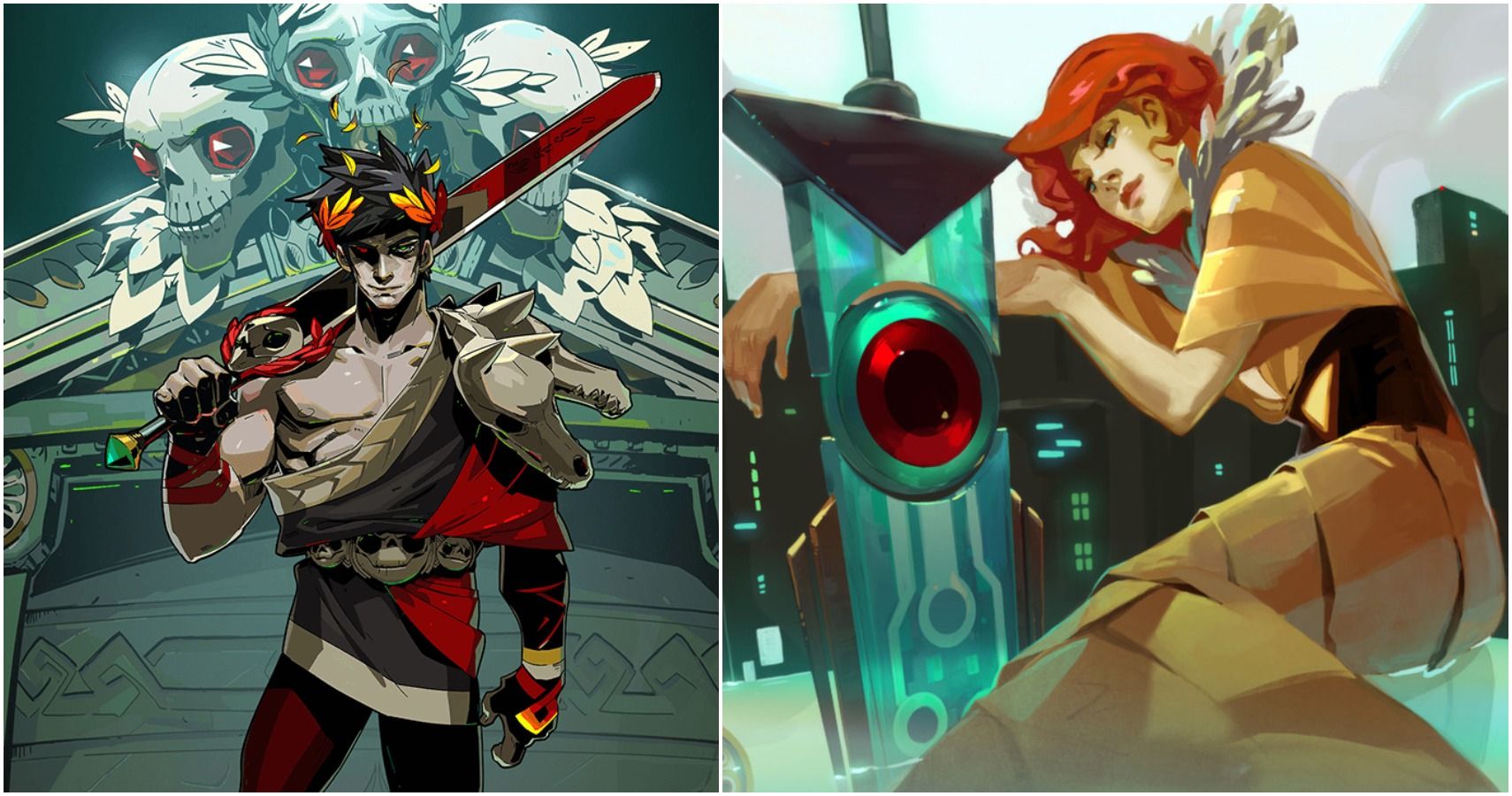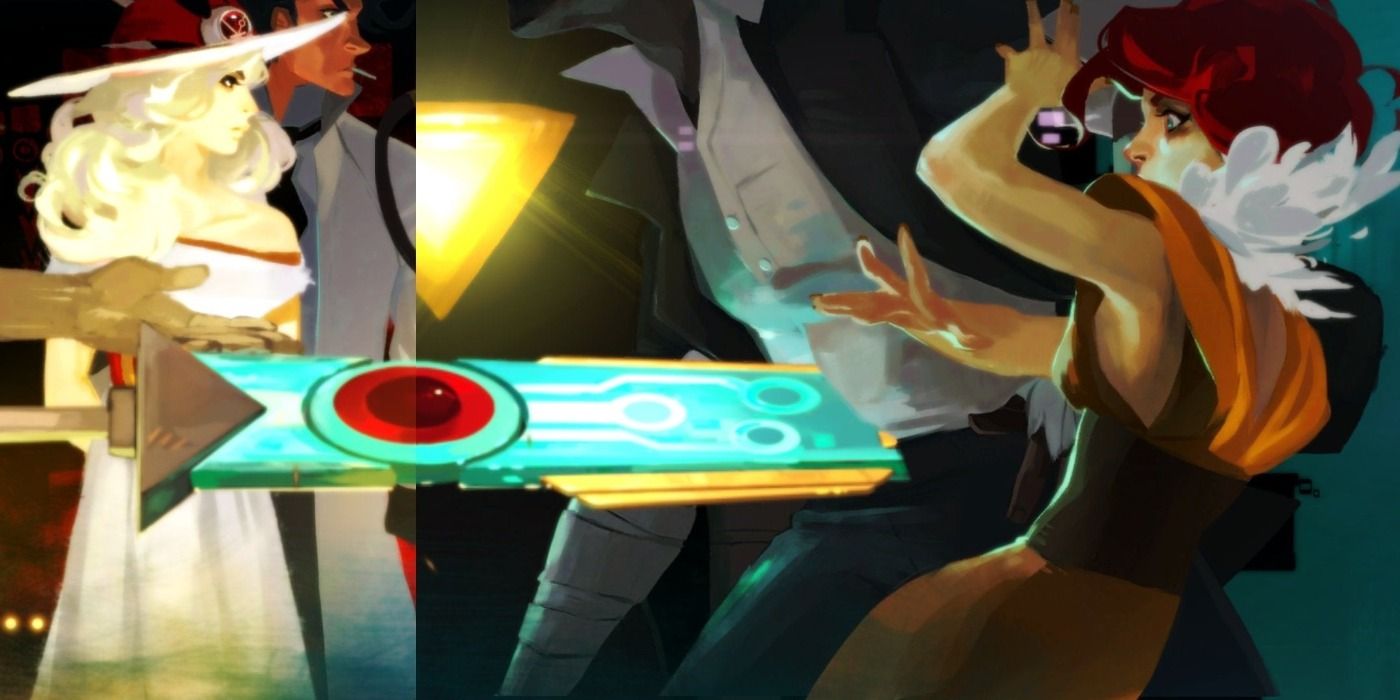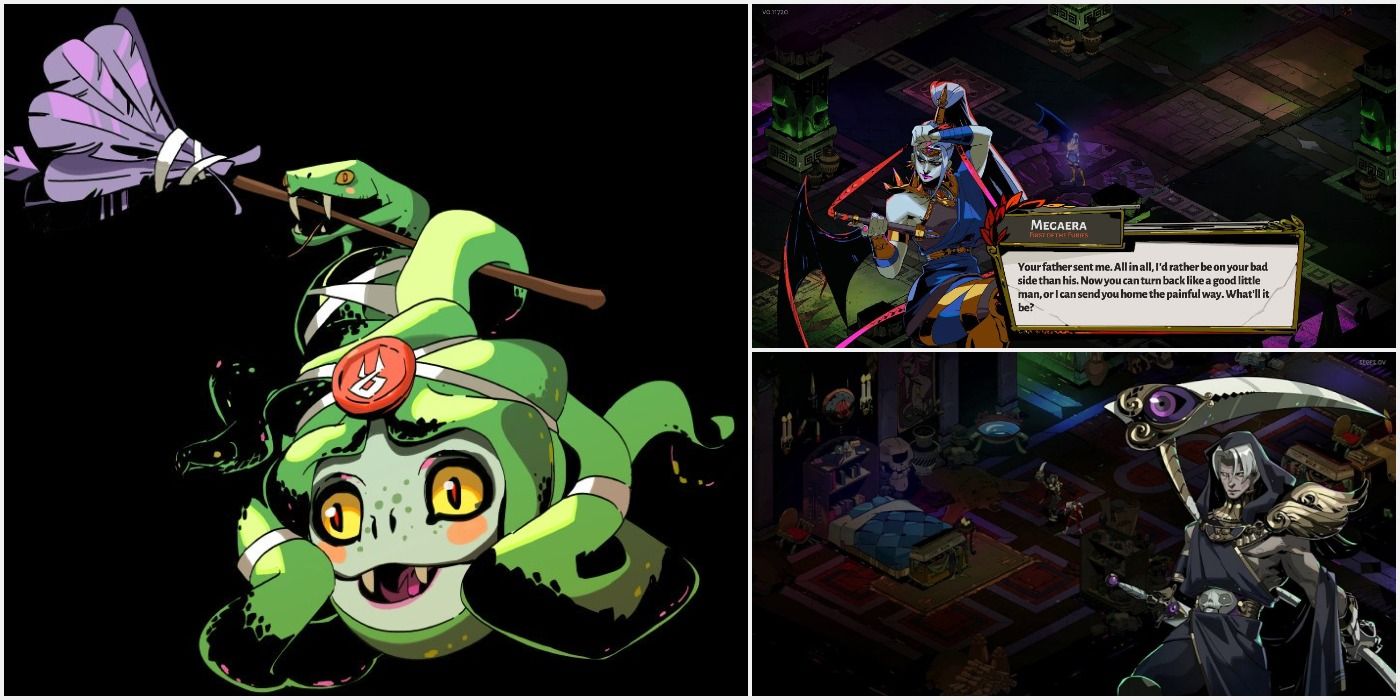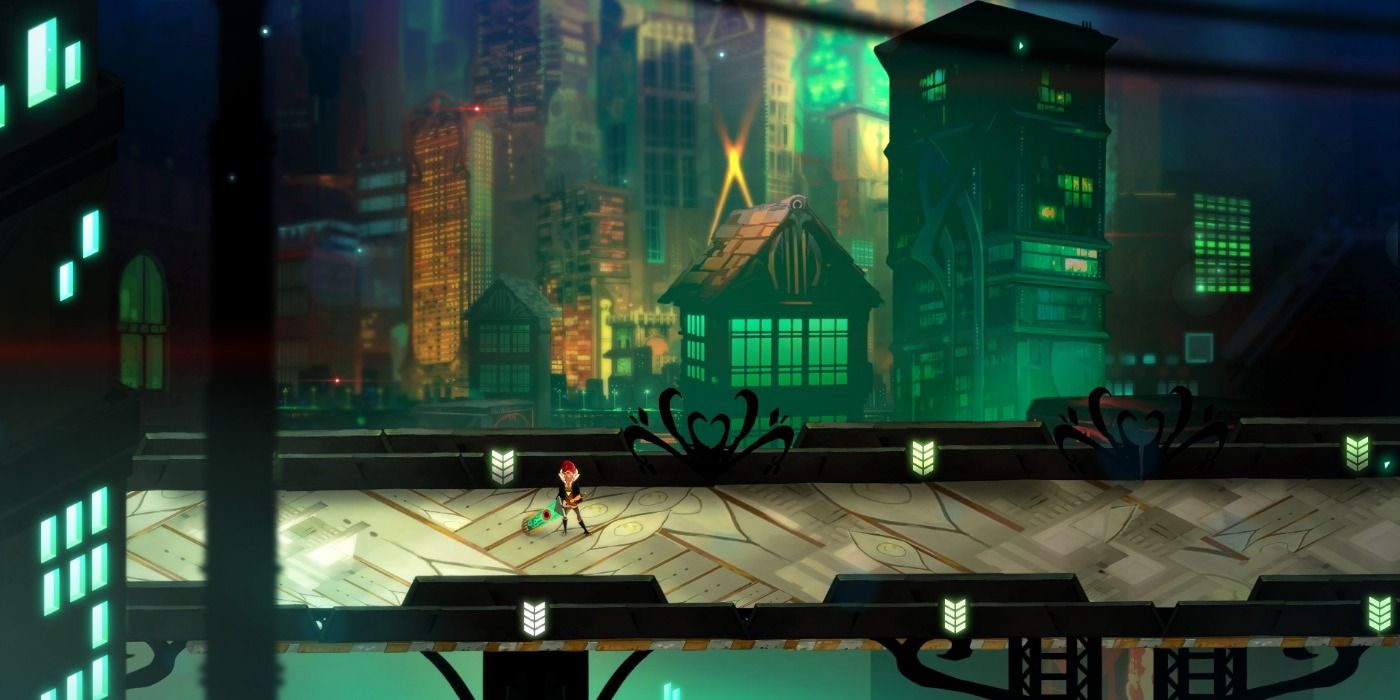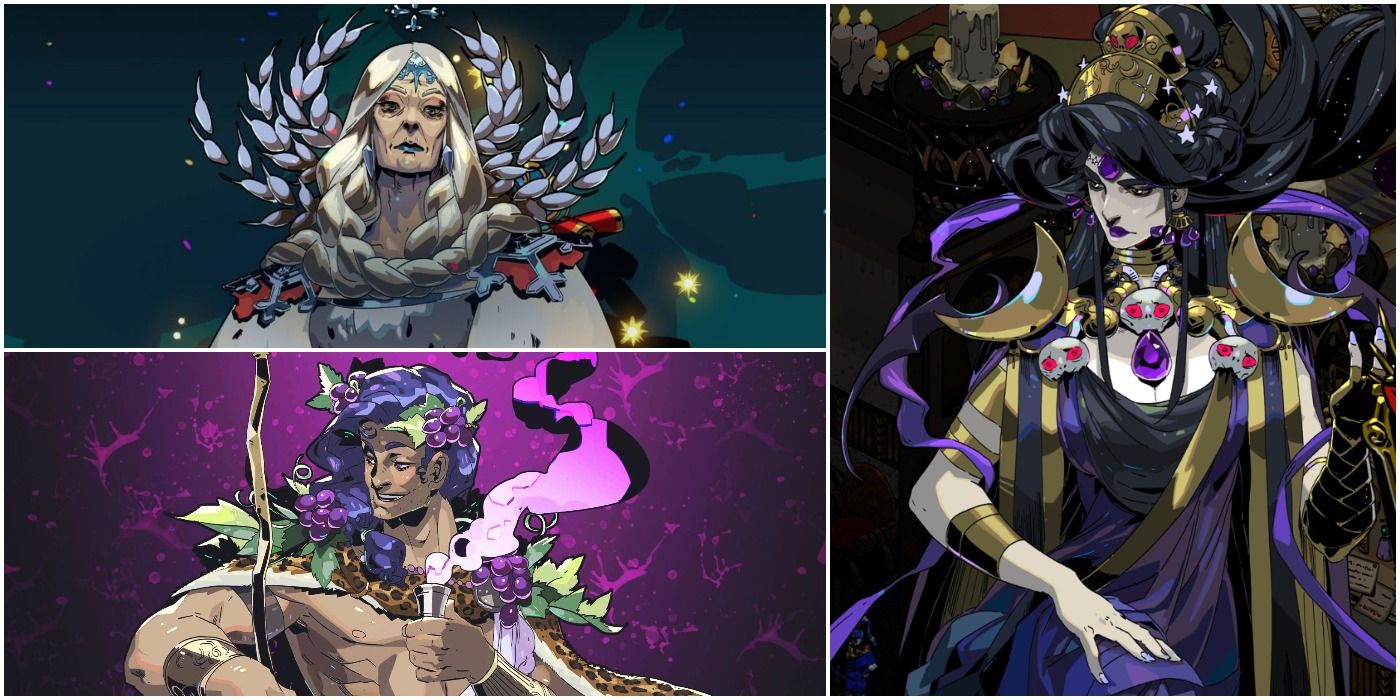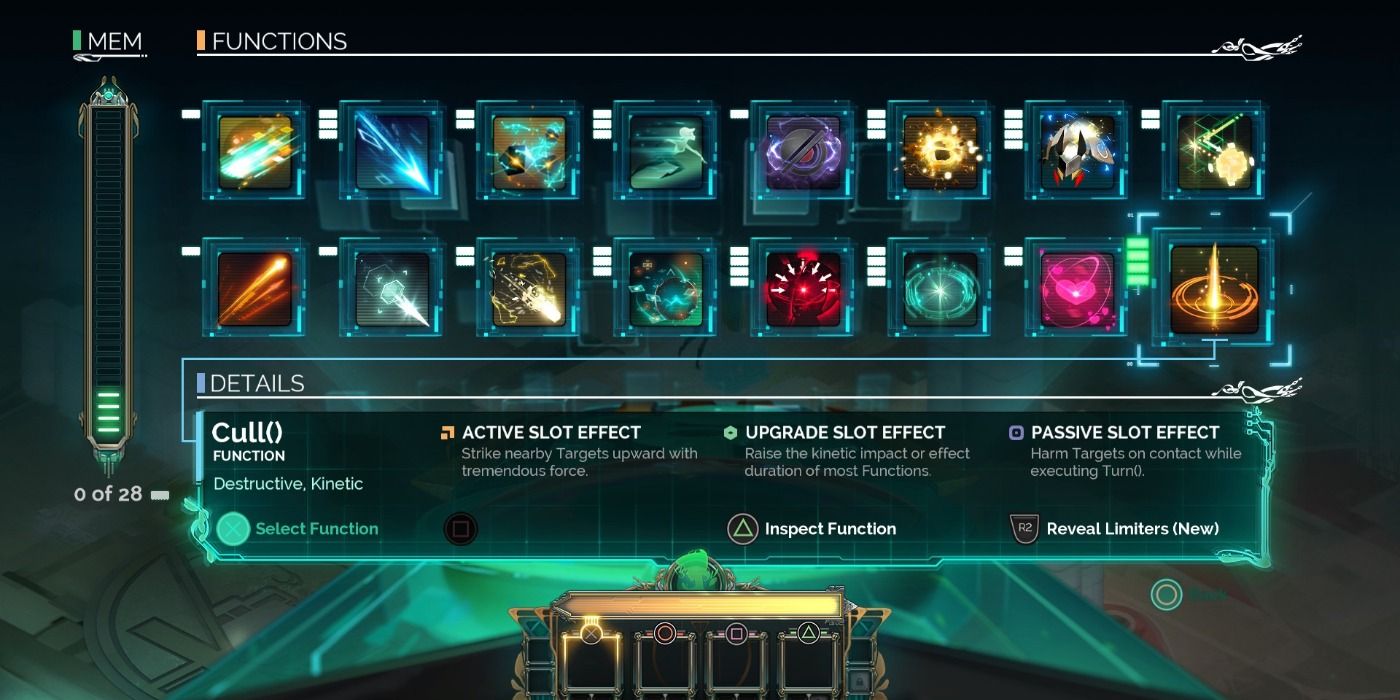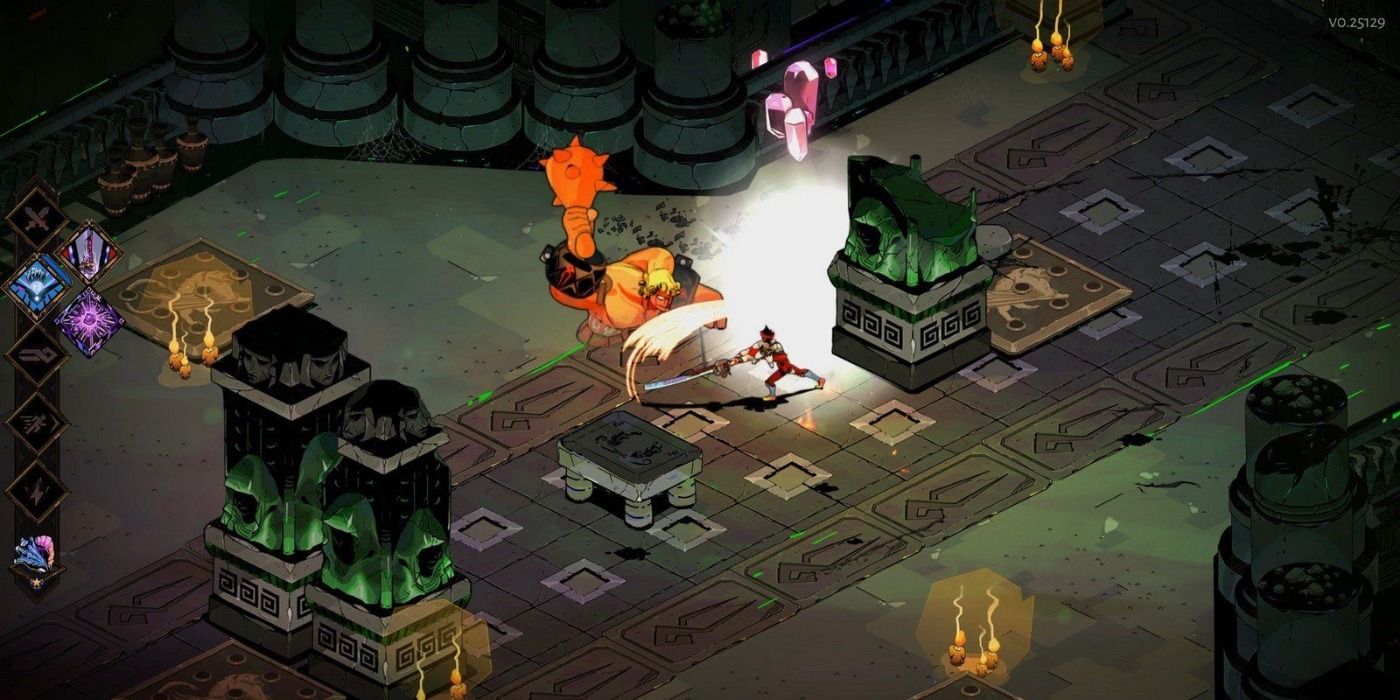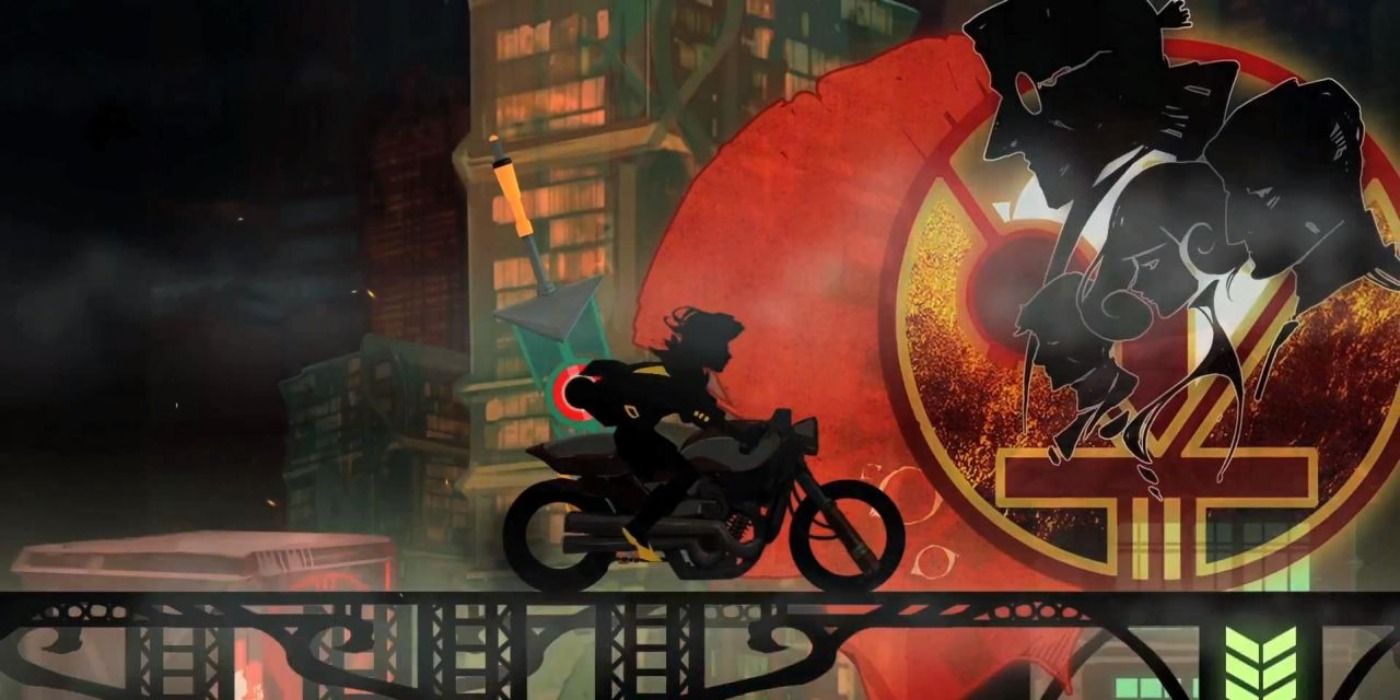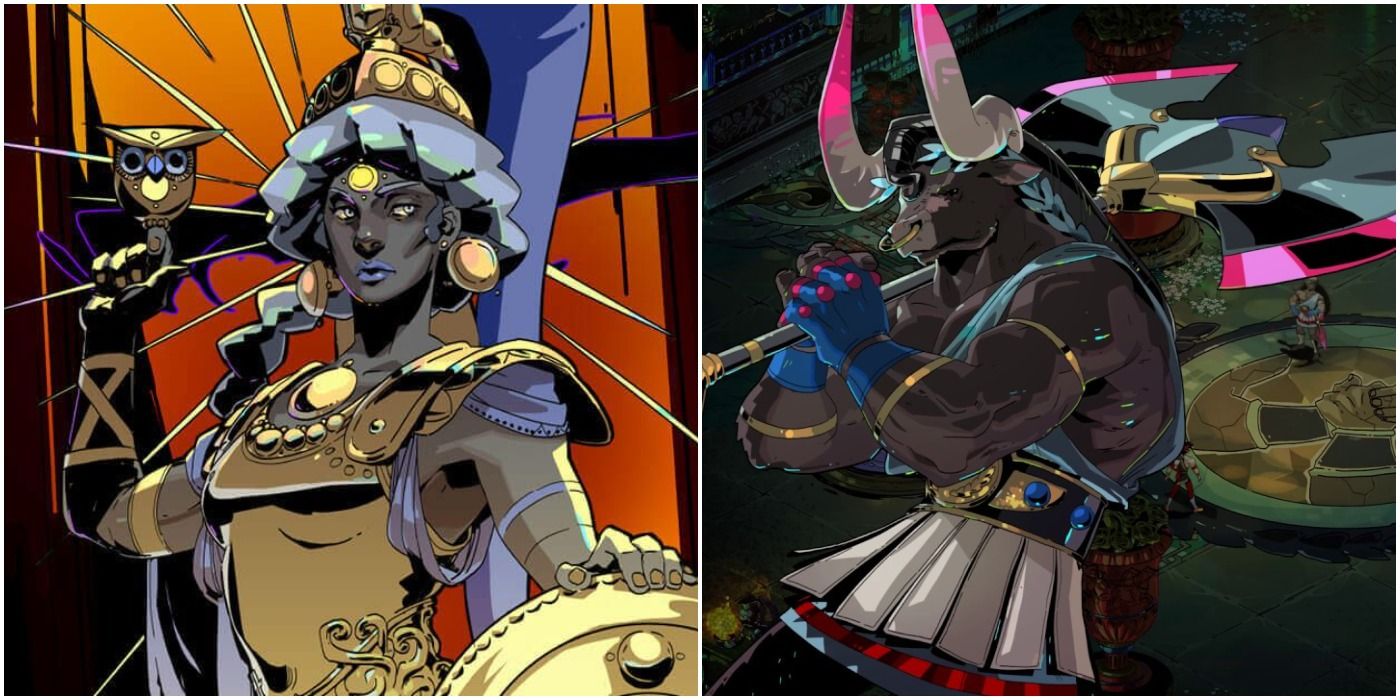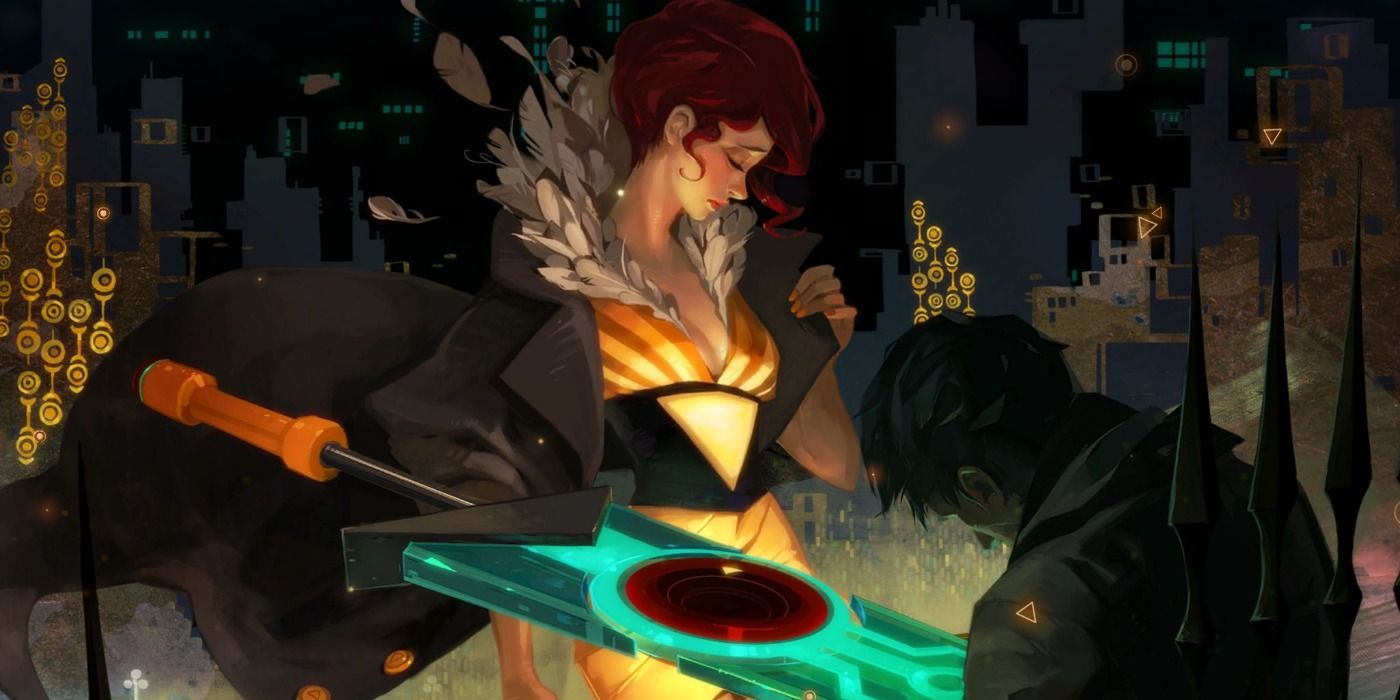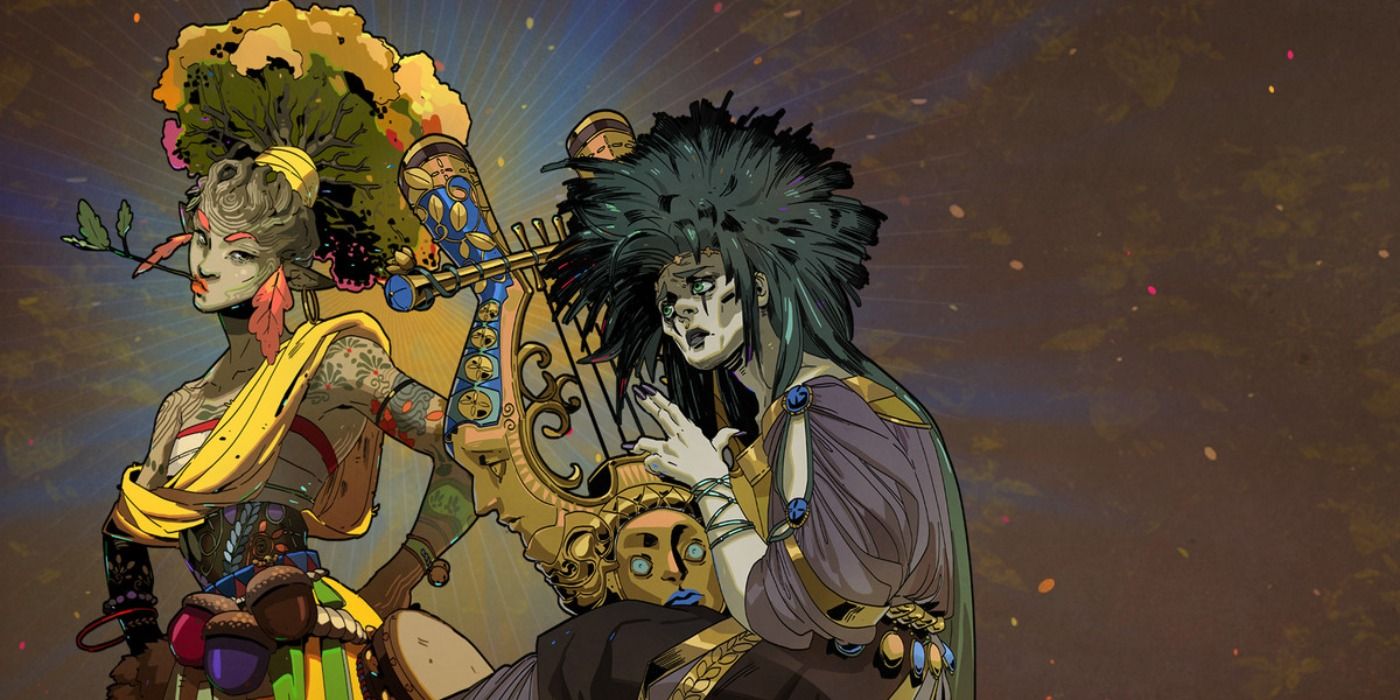Supergiant is known for making artful, captivating games with engaging gameplay and combat. Though Bastion and Pyre are fun, many fans flock to Transistor and the studio’s latest release: Hades. And why not? Both of the games feature main characters with badass swords, for instance. They also feature incredible art styles and ambiance-setting soundtracks.
While the approach to both games may be similar, each one offers a totally different experience beyond just playing as a Greek dude or a chick who lost her voice. Supergiant crafts entire worlds around their main characters with environments that feel electric and alive. But which game do fans prefer more?
10 Transistor: One Epic (If Tragic) Romance
Though not outright confirmed, the game heavily implies that the voice narrating the game and embodied in the Transistor sword is Red's former partner. Red, the player character, has no voice, but the small choices the developers made for her character speak volumes.
Her posture, the way she wields the sword, or messages on terminals — they all contribute to expressing Red’s plucky personality. And since her love interest is trapped in a sword, the way the two communicate (one without a body and one without a voice) is awesome.
The expressive voice acting of Logan Cunningham in tandem with Red's actions transmute every small aspect into a word of their own love language.
9 Hades: Romance Options and a Bisexual Protagonist
Zagreus is Supergiant's first confirmed bisexual protagonist. Fans noticed small details throughout the game that confirm this, but the romance options should be enough evidence of that. Players can romance one of three characters: Thanatos, Megaera, or Dusa.
This obviously differs from Transistor a great deal and offers options for how players can role play as Zagreus. But these romances may not reach the same level of intimacy that Unknown and Red share in Transistor.
8 Transistor: Art-Deco Inspired Everything
It is very difficult to criticize Transistor's amazing, hand-painted aesthetic. The colors pop, the buildings soar over Red, and the little robots would almost be cute if they weren't trying to murder you.
Beyond that, the theme of unchecked decadence runs through everything. As the player learns more about other characters in Cloudbank like Sybil Reisz or Lillian Platt, they unlock more Art-Deco inspired portraits. It's a shame that most of them got "processed."
7 Hades: Amazing Character And Enemy Variety
The allure of Transistor's aesthetic is undeniable, but the cast of characters and enemies is a bit limited in comparison to that of Hades'. For starters, Zagreus deals with not only the Olympian pantheon (Zeus, Aphrodite, etc) but the Chthonic Gods (Thanatos, Hades, etc), too. He also encounters the legendary Minotaur and, ostensibly, Medusa's disembodied Gorgon head.
Moreover, the enemy diversity is even more off the charts. Zagreus must overcome beasties, thugs, skeletons, flame wheels, and more. The same cannot be said for Red in Transistor.
6 Transistor: Chess or Fighting Game Style Combat
Transistor infused combat with music, adding a "pause time" functionality where the player could stop combat and plan out their attacks. This allowed for unique combos and all kinds of dashing and darting. It also accommodated offensive or defensive playstyles.
This attention to combos and pre-planned attacks made the game's combat stand out. After all, it wasn't like Dragon Age: Origins had a similar time-stop/tactical camera mode. Compared to almost any other game in creation, Transistor's combat remains distinct.
5 Hades: Evolution of Roguelike Combat
Hades adopts a much more familiar style of combat for any gamer familiar with roguelike titles. Players can dart around frenetically during boss fights for a scrappier feel or leverage weapons for more oomph. This comes as something of an evolution of Transistor combat that used a pause-time function and had nearly infinite ways to customize combat.
In comparing the two games and their combat, Giant Bomb user inevpatoria put it best: "Hades feels like it takes the right lesson from Transistor — that is, the myriad ways mixing and matching skills and weapon upgrades can lead to interesting new playstyles —and grafts it onto a much more enjoyable moment-to-moment loop."
4 Transistor: Unique Story In Cyberpunk Setting
The game does a stellar job of moving the player through the dystopian, tech-focused setting of Cloudbank. Though some fans criticized its vacillation from walking simulator to difficult combat rush, Supergiant developed a foreboding and creeping sense of dread that built itself throughout the game while juxtaposed against the beauty of the city around Red.
In the same way that a wheel gathers speed downhill, the plot of Transistor gains speed as it careens toward the truth behind what’s happening in Cloudbank. That anxiety and momentum paired with the buttery narration of Logan Cunningham captures the cognitive dissonance of cyberpunk.
3 Hades: Story Setup Follows Greek Mythology
Everyone loves a good Greek setting for a video game, right? From God of War to Assassin's Creed Odyssey, Greek Mythology provides a familiar structure for story-telling without limiting what creators can do with the characters. Hades is a perfect example of this.
But so few games have mined the myths so well as Supergiant did with this game. Beyond the "Big Ones" like Zeus and Poseidon, there are lesser-known characters in Greek lore like the Furies, tragic Orpheus, or war heroes like Achilles and his lover Patroclus.
The game makes full use of its already established world — an option that Transistor didn't have since it created its own.
2 Transistor: Airy, Ethereal Soundtrack
Music plays an integral role in Transistor and is almost a character unto itself. Red does have a dedicated humming button, after all. But the composer, Darren Korb, explained to TheGamer that Radiohead's OK Computer served as a big inspiration for the musical vibe.
The mixture of glitch, breathy, expressive vocals from singer Ashley Barrett, and driving synth encapsulate life in Cloudbank city under threat of disconnection and identity disintegration.
1 Hades: Epic, Godly Soundtrack
Much like the combat in Hades being an evolution of Transistor's, the soundtrack for the game is, as well. Darren Korb returned to set the game's tone with synths, but this time with a focus on the "underworld" and Greek musical themes. But Korb returned to Radiohead's Thom Yorke for inspiration when it came to Orpheus.
“What kind of voice would move the gods to tears?” Korb asked. This insightful approach can be felt in every track from the game. Where Transistor gained speed like a ball down a hill, the Hades soundtrack pushes players into the deep end of the pool.
Heavy drums and a droning bass spur the player to keep coming back for more. In fact, that excellent soundtrack might be one reason the game hit 1 million copies sold in September 2020.

